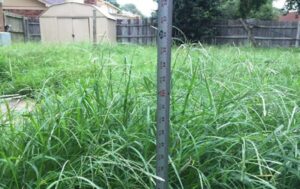
Introduction
Vegetables are a vital component of our diet, offering an array of essential nutrients and culinary possibilities. However, there exists a prevalent misconception that all vegetables grow exclusively in the ground. This article aims to dispel this notion by exploring the diverse habitats where vegetables thrive.
Vegetables That Grow Above Ground
Contrary to popular belief, numerous vegetables flourish above the soil surface, harnessing sunlight and air for their growth. Leafy greens, such as spinach and kale, are prime examples of this phenomenon. These plants develop lush foliage that extends skyward, capturing sunlight for photosynthesis. Similarly, fruiting vegetables like tomatoes and peppers emerge from vines or bushes, bearing colorful produce that ripens in the open air. Stem and flower vegetables, including broccoli and cauliflower, exhibit unique growth patterns, with edible portions extending above ground in intricate formations.
Vegetables That Grow Partially Above and Below Ground
In addition to above-ground growth, many vegetables straddle the boundary between soil and air, utilizing both realms to sustain their development. Root vegetables, such as carrots and radishes, exemplify this dualistic nature, with nutritious taproots penetrating the earth while leafy greens flourish above. Similarly, bulb vegetables like onions and garlic form underground storage structures, safeguarding vital nutrients while producing aerial shoots for reproduction. Tuber vegetables, including potatoes and sweet potatoes, showcase a similar balance, with tubers nestled beneath the soil surface while vines sprawl above ground, bearing foliage and flowers.
Factors Influencing Vegetable Growth Locations
Several factors influence where vegetables grow and thrive, shaping their habitats and cultivation practices. Environmental conditions play a crucial role, with soil type and quality determining the viability of root development and nutrient uptake. Climate and temperature requirements vary among vegetable species, influencing their geographic distribution and seasonal growth patterns. Furthermore, plant genetics and adaptations contribute to species-specific growth habits, reflecting evolutionary traits for survival in diverse ecosystems. Human intervention and cultivation practices, such as agricultural techniques and horticultural innovations, also influence vegetable growth locations, expanding the possibilities for sustainable food production.
Conclusion
In conclusion, the notion that all vegetables grow exclusively in the ground is a misconception debunked by the rich diversity of vegetable habitats. From leafy greens basking in sunlight to tubers nestled beneath the soil, vegetables demonstrate remarkable adaptability and resilience in various environments. Understanding the diverse cultivation methods and growth locations of vegetables not only enriches our appreciation for nature’s bounty but also empowers us to embrace the versatility of vegetable gardening for a healthier and more sustainable future.






